This is another take on a multi-grain bake we did not s long ago that you can find here;
60% Whole Grain SD / YW Bread With Caraway, Rye Chops, Coffee and Cocoa

This time we upped the whole grains to 75% and the hydration to a little over 85%. We dropped the chops and added multi-grain sprouts. The whole grains and sprouts were rye, spelt and whole wheat. A combination we like very much as long as the rye equals the other two grains.
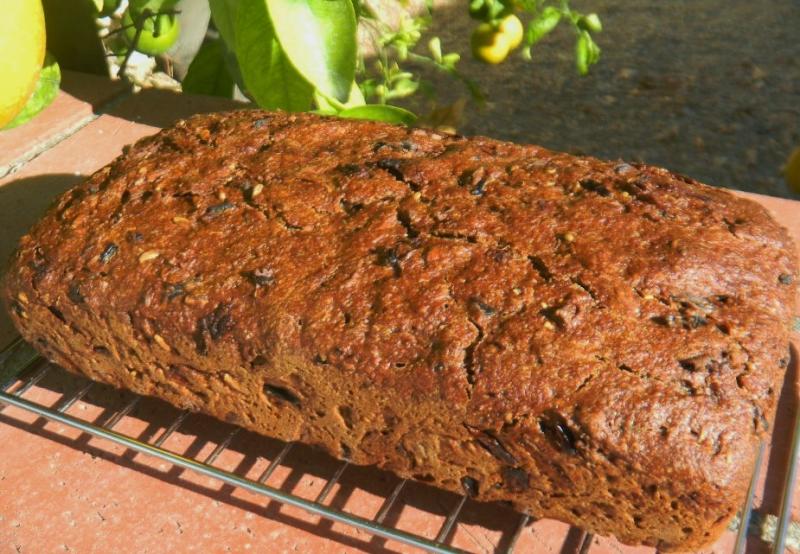
We also decided to make this bread a little more Russian by using their Baltika #6 Porter for a majority of the liquid in this bread and all of the dough wetness if you overlook the barley malt.
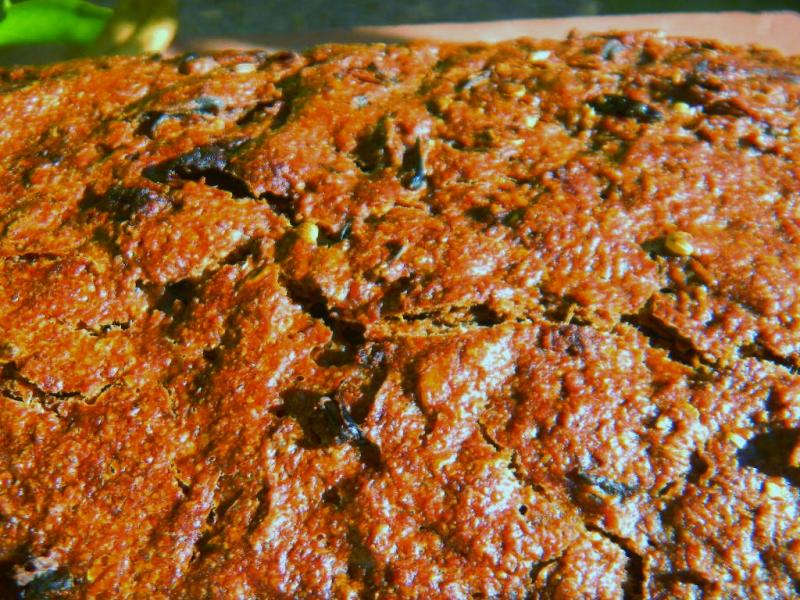
We were overcome by guilt and also knowing that The Hempster would not be her kindly self if we left out the seeds so we tossed in some caraway and coriander to perfume this dark bread in a traditional way - but not too much.

Hanseata, probably in a fit of non-hempness, is also the creator of her very fine wild rice bread that we like so much. Thinking she would still be upset that there are no hemp seeds in this bread, we plunked in some cooked wild rice hoping to appease Her Hempness with one last gesture of jester.

Keeping with the black theme this bread was calling out for, we also added in some caramelized onions, quite a lot actually, with its deglazed reduced juices as Eric, Andy, Ian and so many TFL bakers are wont to do out ofa honed professional education and experience for many of them that know what they are doing and a playful, inquisitive wonderment of the strange for Ian and myself.

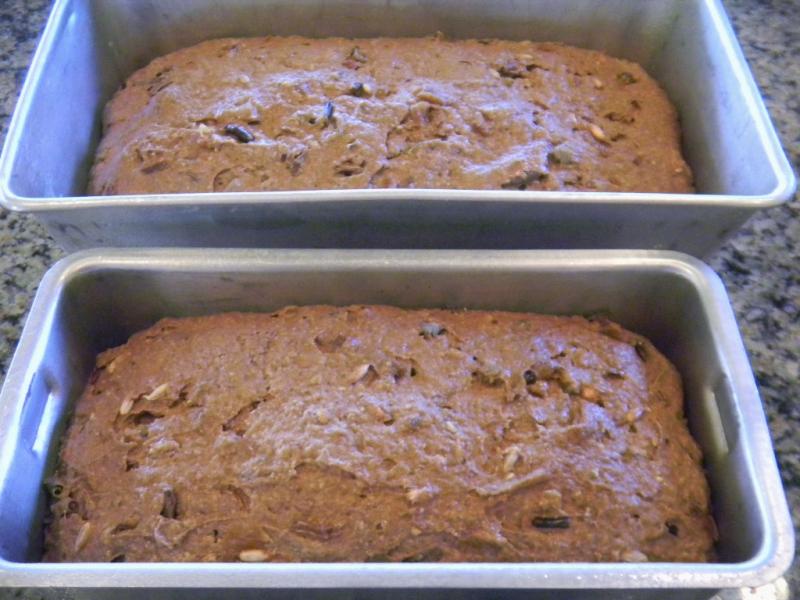
One last shot at anti-establishment went to the Combo YW and SD rye and Desem starter and levain we cooked up over two builds. As we contemplated the dark path we were about to trip along, in total disregard of anything sane or normal, my apprentice became edgy, quite uncomfortable really and took on the look of one sick puppy. No, it wasn’t Toady Tom’s Toasted Tidbits at fault here even though we put 15 g of them in the mix.


It is a look that I see most often right before she upchucks - which she did... then murmuring under her lowly growl something about death to all dark baking masters or another…….. It seemed she got sick after noticing that the bread lacked nuts. She recovered quickly after the upheaval when she realized there were already plenty of nuts out of their shells in the kitchen as it was - so no extra nuts were required for this Holiday bake.


After all of what would pass for bread 101 on Empress Ying’s home planet, we hoped that this bread would be a shade darker than a dark one should be and also one that we could be proud to pair with the fine Pate Maison that we had baked and smoked up for the Holidays the day before. Hopefully, both will pair well with a nice Malbec from Argentina, if one could afford it and a plate of various exotic cheeses from other places even more expensive.

Hey, it’s the Holidays and who needs another pair of Santa socks, snowflake ties and Snowman stocking caps anyway. So, as an option, save enough bread by not getting those things and splurge on some foreign hooch and cheese to share with family and friends instead - all while making the bread and pate that much better.


The crust came out dark, shiny and crispy but, after a 24 hour wait before slicing, it went soft with a slight chew. This bread cut ¼” slices easily without crumbling. The crumb was not heavy, slightly open, soft and very moist with little gloss.
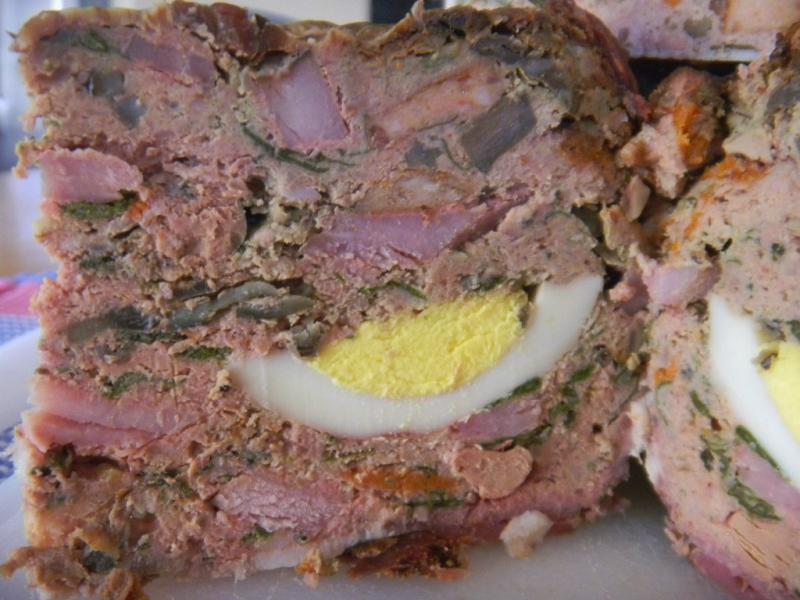
The taste was where this bread really shines. Subtle coriander and caraway flavors combine with a stronger caramelized onion taste and the chew of the wild rice and sprouts to go with the complex flavors of the porter, cocoa and coffee. Very tasty indeed.

We have now eaten it plain, toasted with butter, as a sandwich and toasted with pate – just delicious and the perfect pate platter mate.

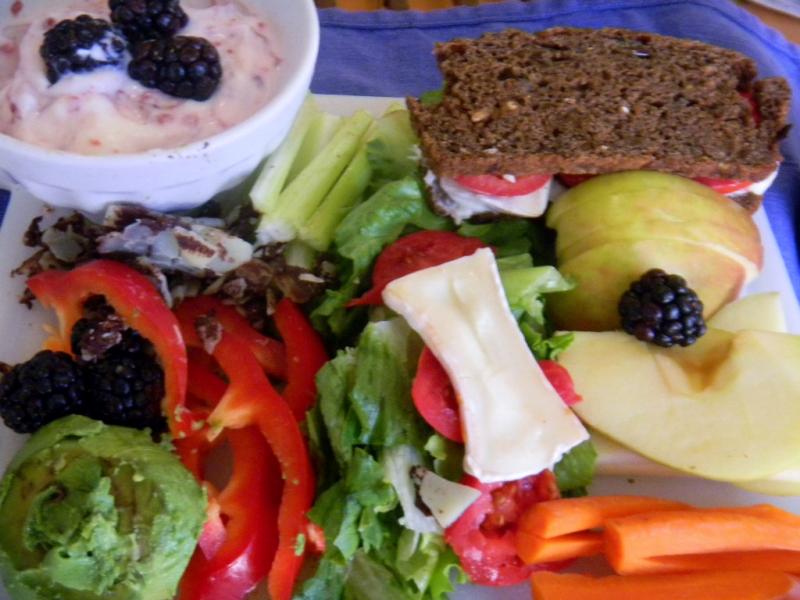
Method
The method was straight forward if you remember to start the WW sprouts a day before the spelt and rye sprouts since they take 48 hours to chit instead of 24. The levain was built over (2) stages of 8 and 4 hours each with an overnight retard of 12 hours following the 12 hours on the counter
The flours, salt, Toady Tom’s Toasted Tidbits, ground flax seed and the red and white malts were autolysed with the Baltika #6 Porter for 1 hour after my apprentice had tasted about 205 ml of the 500 ml bottle to make sure that it wasn’t a covert left over cold war poison of a 3rd kind.
Once the autolyse and levain came together, we did 10 minutes of French slap and folds and then 3 sets of S&F’s on 30 minute intervals where the seeds and rice were incorporated in the 2nd set and the sprouts on the 3rd set.
The dough was allowed to ferment and develop for 1 hour before being shaped into an 800 g and one near 500 g loaf and panned. The dough was allowed to proof for 1 hour in a trash bag on the counter before being retarded for 12 hours in the fridge.
Once out of the fridge the small loaf was allowed to proof for 4 hours on the counter. The larger one proofed for 4 hours on the counter at 65 - 68 F and an additional 1 ½ hours at 85 F in the make shift microwave proofer that had a cup of boiling water in it.
Both of these should have been baked in the mini oven but Big Betsy was preheated to 500 F instead with 2 of Sylvia’s steaming pans and a 12”cast iron skillet full of lava rocks on the bottom rack. The stone was put on the very top rack of the oven to project radiant heat downward to the top of the loaves.
As soon as the small pan went in the temperature was turned down to 450 F for 15 minutes of steam. When the steam was removed the temperature was turned down to 350 F, convection this time.
After 5 minutes the bread was removed from the pan and finished baking directly on the oven rack. The bread was turned 180 degrees every 5 minutes until the internal temperature reached 190 F. Total baking was 30 minutes when the bread was removed to the cooling rack.
The larger loaf was baked the same way through steam but took an extra 15 minutes at 350 F to reach 190 F internal temperature.
Formula
Mixed Combo Starter | Build 1 | Build 2 | Total | % |
SD Starter | 5 | | 5 | 0.99% |
Yeast Water | 10 | | 10 | 2.63% |
WW | 10 | 15 | 25 | 6.58% |
Rye | 30 | 45 | 75 | 19.74% |
Spelt | 10 | 15 | 25 | 6.58% |
Water | 40 | 75 | 115 | 30.26% |
Total Starter | 95 | 150 | 245 | 64.47% |
| | | | |
Starter | | | | |
Hydration | 100.00% | | | |
Levain % of Total | 20.14% | | | |
| | | | |
Dough Flour | | % | | |
Toady Tom's Toasted Tidbits | 15 | 3.95% | | |
Whole Wheat | 35 | 9.21% | | |
Dark Rye | 141 | 37.11% | | |
Whole Spelt | 35 | 9.21% | | |
AP | 154 | 40.53% | | |
Dough Flour | 380 | 100.00% | | |
| | | | |
Salt | 8 | 2.11% | | |
Russian Baltika Porter | 305 | 80.26% | | |
Dough Hydration | 80.26% | | | |
| | | | |
Total Flour | 507.5 | | | |
Water & Russian Porter 305 | 432.5 | | | |
T. Dough Hydration | 85.22% | | | |
Whole Grain % | 74.58% | | | |
| | | | |
Hydration w/ Adds | 85.51% | | | |
Total Weight | 1,266 | | | |
| | | | |
Add - Ins | | % | | |
Red Malt | 5 | 1.32% | | |
White Malt | 5 | 1.32% | | |
Barley Malt | 20 | 5.26% | | |
Ground Flax Seed | 15 | 3.95% | | |
Add- In Total | 45 | 11.84% | | |
| | | | |
Multigrain Sprouts | | % | | |
WW | 10 | 2.63% | | |
Rye | 20 | 5.26% | | |
Spelt | 10 | 2.63% | | |
Total Sprouts | 40 | 10.53% | | |
| | | | |
Other Stuff | | | | |
Caramelized Onions. | 100 | 26.32% | | |
Cocoa | 10 | 2.63% | | |
Instant Coffee | 10 | 2.63% | | |
Caraway Seeds | 8 | 2.11% | | |
Coriander Seed | 5 | 1.32% | | |
Cooked Wild Rice | 100 | 26.32% | | |
Total Other Stuff | 233 | 61.32% | | |
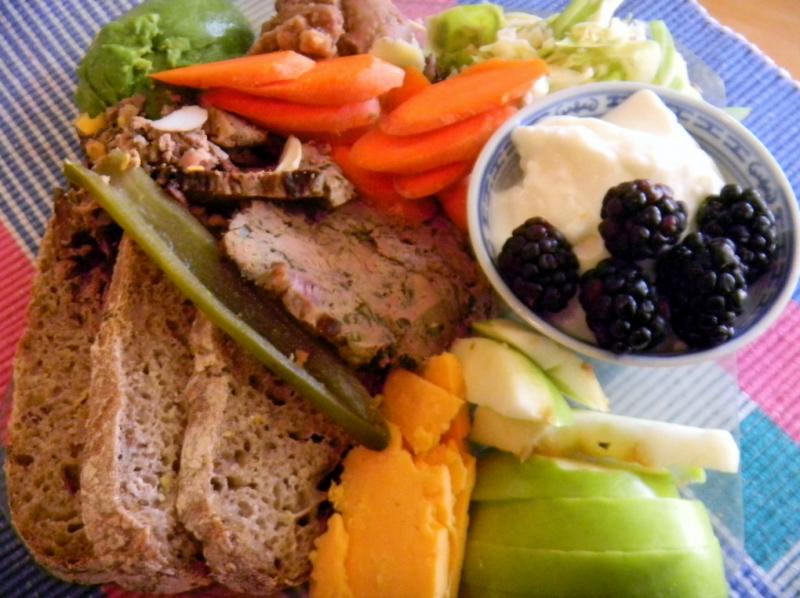
This lunch plate has some thin sliced sliced pate with 100% whole spelt bread, aged super sharp crumbly cheddar cheese, a pickled Serrano pepper, half a Granny Smith apple, some carrot coins, half an avocado, black and pinto re-fried beans, cabbage salad with black raspberries on non fat yogurt.